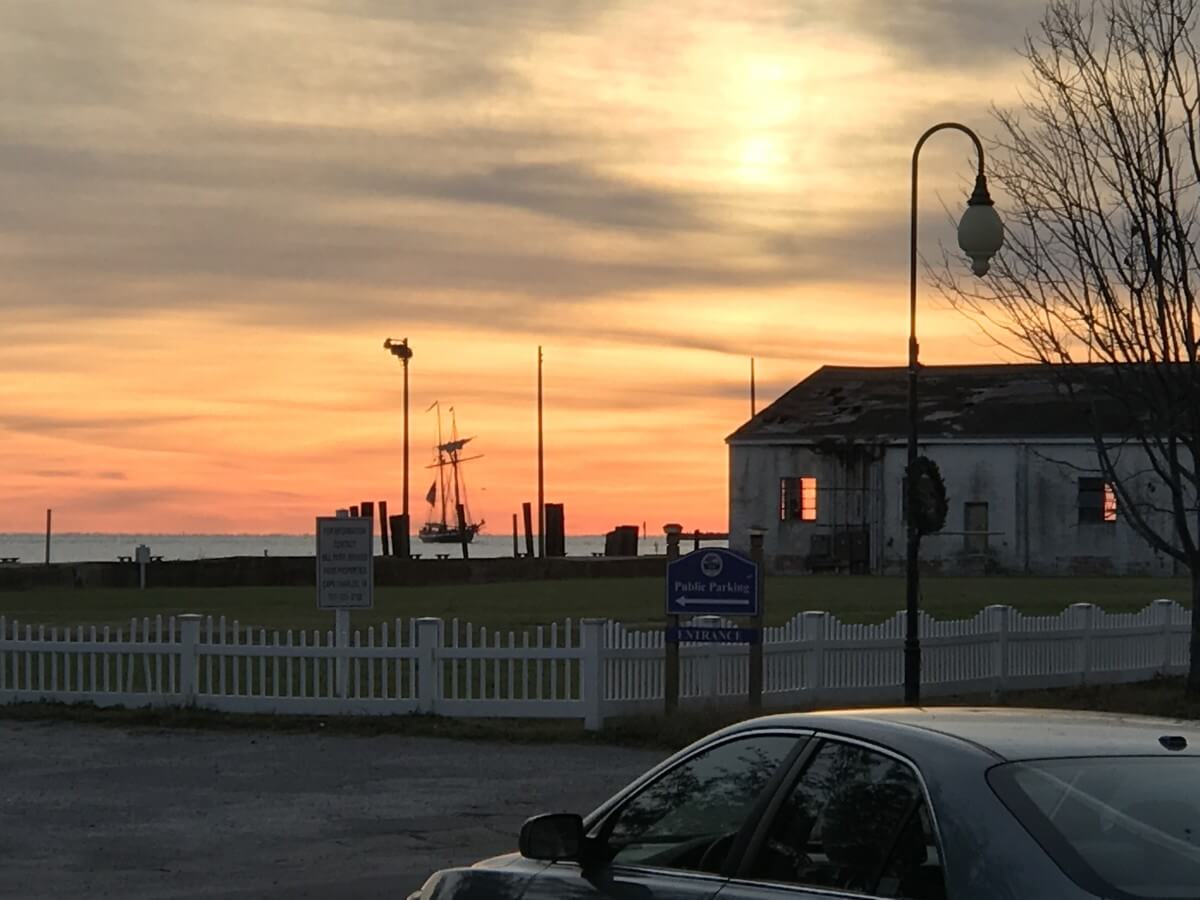Overview of Cape Charles, Virginia

Cape Charles Sunset
Cape Charles History
In the late 1800s, railroads began to connect the United States like never before. The East Coast’s Delmarva Peninsula posed a challenge to railroad expansion south, so Pennsylvania congressman William L. Scott embarked on a search for an ideal route and expansion starting point. In 1883, he found the perfect place in what is now Cape Charles.
To realize his vision, Scott bought about 2,500 acres of plantation land owned by the descendants of former Virginia Governor Littleton Waller Tazewell, 136 acres of which was transformed into the planned community of Cape Charles.
Railroad construction was swift. Freight and passenger trains first made the journey across the 36-mile Chesapeake Bay in 1884. Cape Charles was founded two years later.
Many of the town’s original buildings are still standing, especially in the Cape Charles Historic District, which was placed on the National Register of Historic Places in 1989.
Early American history and archaeology buffs have plenty of opportunity for exploration in and around Cape Charles. About 8 miles south of town, just off Highway 644, lies the ancestral home of the Custis family, who played a major role in the founding of Virginia and built a large plantation there.
The house is no longer standing but the site is open to visitors and contains the tomb of John Custis, the family patriarch. His descendants included Martha Dandridge Custis, wife of George Washington.
Despite its status as the largest incorporated town in Northampton County, Cape Charles has remained small, solidifying its status as a resort town. As of 2016, the town was home to just over 1,000 people.
Cape Charles Hotels
There’s no shortage of accommodation options in Cape Charles, with choices that include luxury beachfront resorts, picturesque bed and breakfasts, and chain hotels. Lodging in Cape Charles can be found throughout town but is concentrated on the western shore near Cape Charles Harbor and within the Historic District.
About 12 miles south of the central Cape Charles via US-13, you’ll find Sunset Beach Resort, one of the peninsula’s most visited. The resort encompasses hundreds of RV and tent camping spots as well as quaint cottages that have their own kitchen and sleep up to six people. There’s also a hotel on-site, along with a private beach and pool, and the Jackspot restaurant, which serves Southern-style comfort food and American favorites. Sunset bonfires on the beach are common occurrences at the luxury resort.
Activities, Hotspots and Events in Cape Charles
No matter if you’re in town on a hunting or fishing trip, or you want to unwind on the beach, the Cape Charles Museum and Welcome Center is an ideal first stop. Located on Randolph Avenue, the museum houses early photographs, postcards and models of ships and locomotives that frequented the Eastern Shore throughout the 19th and 20th centuries.
Randolph Avenue is also home to the Cape Charles Brewing Company, the town’s first craft brewery. As of late 2017, construction was in full swing. Beer options will include an exclusive oyster stout made with locally grown hops. To honor the local heritage, the food menu at Cape Charles Brewing will feature farm/sea to table dining.
Seafaring vessels also play an integral role in the history and modern lifestyle of Cape Charles. The Town of Cape Charles Harbor and Marina contains 95 deepwater slips to protect all visiting ships, from commercial fishing vehicles to recreational motor boats. From the Harbor and Marina, you’ll enjoy a short stroll to downtown.
Visitors can take in Cape Charles’ rich architectural heritage with a stroll through the town’s centrally located Historic District. Notable landmarks include the Palace Theatre and the Cape Charles Memorial Library. Housed in a grand building that’s a prime example of Victorian architecture, the public library hosts a variety of activities and events for the whole family throughout the year, including weekly story-times.
Cape Charles Historical Society’s Annual Oyster Roast is held the last week of November and is one of the most popular events in Cape Charles. If you visit Cape Charles between March – October, you can pick up fresh local produce, baked goods and handcrafted items at the farmers’ market, held on Tuesdays from 4 – 7 p.m.
Natural Landscapes in Cape Charles
Cape Charles spans more than 2,800 acres, much of which consists of wetlands, shoreline and wildlife habitats. You can walk the trails and bird-watch at the Eastern Shore of Virginia National Wildlife Refuge, which is open year-round. The Refuge also hosts a white-tailed deer hunt every year, and hunting permits are free to the public.
If you’re traveling with your furry friends, head to Sandy Paws Dog Beach on the south end of Cape Charles. Located less than a mile from the Chesapeake Bay Bridge-Tunnel, the leash-free dog beach is a great place to give your pooch exercise while you take in expansive views of Chesapeake Bay.
The Chesapeake Bay Bridge-Tunnel is a interesting attraction in itself. Considered a marvel of engineering, the 23-mile trestle bridge opened in 1964 and was expanded to accommodate four lanes of traffic in 1999. The Bridge replaced ferries as the major method of transportation across Chesapeake Bay.